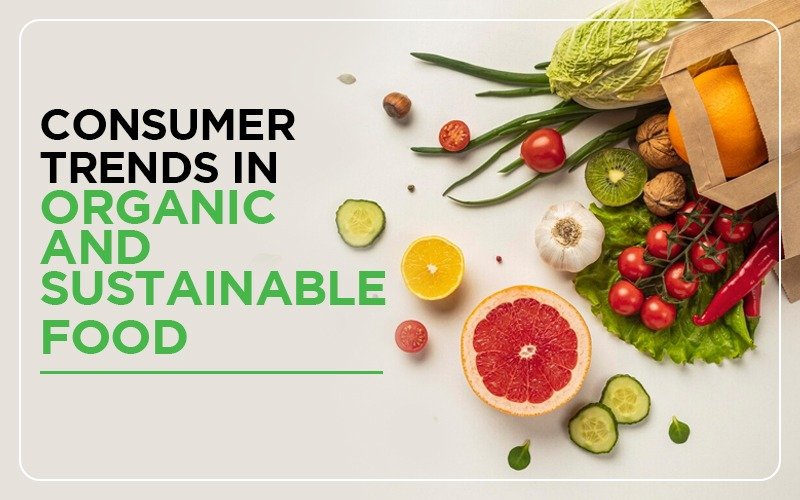
Consumer Trends in Organic and Sustainable Food
Posted on March 13, 2024
Consumer alternatives, mainly inside the meals enterprise, have shifted considerably in the direction of more sustainable and mindful alternatives in recent years. Consumer behavior and buying choices are inspired with the aid of various factors.
When making food selections, how do customers prioritize sustainability
Sustainable food selections are prioritized through purchasers basically because they may be related to health, great, and filling or nutritious traits. These attributes are pretty valued through clients, with 55 % pronouncing that as a minimum this sort of 3 attributes changed into a top-3 criterion for his or her last buy.
Furthermore, clients are encouraged by means of the belief of sustainability related to particular products, such as bushes and culmination. Moreover, 54% of customers try to purchase products or services from brands that take a stand on social or environmental problems, showing that they may be touchy to the environmental impact in their food selections.
In spite of the growing interest in sustainable food, handiest 10% of customers prioritize sustainability when buying meals, and even fewer are willing to pay a premium for it. For meals groups to appeal to the mainstream 55% of clients inquisitive about sustainable food, they must cope with barriers together with affordability and comfort.
Consumer trends are characterized by:
Consumption of Organic and Sustainable Food produce is growing due to a better attention about health and nicely-being among customers.
Consumers are an increasing number of favoring nearby and natural farming techniques which can be more sustainable, promote biodiversity, and decrease carbon footprint because of growing cognizance of conventional farming’s environmental impact.
Ensure meals security through helping local farmers and companies, stimulating the local economy, and fostering community relationships.
As consumers are seeking for records about wherein their food comes from and how it’s far produced, transparency and traceability have become more and more vital within the meals supply chain.
Locally sourced and organic meals are perceived with the aid of many clients as having superior taste and satisfactory to industrially produced foods.
Consumers are an increasing number involved in approximately the ethical implications in their food selections, selecting local and organic ingredients that sell truthful labor practices and animal welfare.
| Trend | Description | Source |
|---|---|---|
| Increased demand for organic food | Consumers are increasingly seeking out organic options due to concerns about health and environmental impact. | Organic Trade Association – Industry Statistics |
| Growth in plant-based alternatives | Rising interest in plant-based diets driven by health, environmental, and ethical considerations. | Nielsen – Plant-Based Foods Are Not Just for Vegans Anymore |
| Transparency in food sourcing | Consumers are demanding more information about where their food comes from and how it’s produced. | FoodNavigator-USA – Transparency Trends |
| Packaging innovation | Sustainable packaging solutions are gaining traction as consumers become more aware of plastic pollution. | GlobalData – Packaging Trends |
| Local and seasonal produce | Preference for locally sourced and seasonal foods is growing, driven by support for local economies and freshness. | Statista – Local Foods Market |
| Ethical and fair-trade products | Consumers are choosing products that support fair labor practices and ethical sourcing of ingredients. | Fairtrade International – Trends |
Trends within the international market
As purchasers more and more price health, sustainability, and ethical issues, the Global Organic Food and Beverage Market is anticipated to grow notably. North America is anticipated to dominate the marketplace proportion in the following couple of years.
More than 90% of the marketplace share is predicted to be held by natural food through 2027, as organic culmination and greens are experiencing an exponential call for.
Further, the call for easy-label meals and beverage merchandise indicates a upward push in health attention among clients, which will increase the call for sustainable and cruelty-loose products.
There is a sturdy potential for innovation and diversification within the organic marketplace for the duration of 2022–27, with a CAGR of 11.56 %. The call for natural food is likewise increasing inside the meals service industry, with greater organic options on their menus as well.
Also covered in the natural meals enterprise is natural farm animals, which is regulated via a welfare standard. Organic aquaculture is also an environmentally friendly and sustainable commercial enterprise.
Furthermore, busy life have fueled the call for for natural convenience meals, along with geared up-to-consume meals, snacks, and precut veggies.
Market growth and projections:
North American customers are focused on health, sustainability, and ethics, so the natural food market is expected to develop hastily.
Natural meals is expected to dominate the market by 2027, with organic fruits and veggies seeing excessive demand.
A surge in demand for sustainable meals has led to purchasers opting for socially and environmentally accountable manufacturers.
Conclusion:
A shift towards responsible consumerism is pondered in consumers’ growing choice for natural and sustainable meals. In order to meet the evolving wishes of purchasers seeking more healthy, environmentally pleasant, and ethically produced meals options, corporations need to recognize these developments.
In order to capitalize on the developing marketplace for Organic and Sustainable Food, businesses want to align with customer options for sustainability, transparency, nice, and ethical practices.
